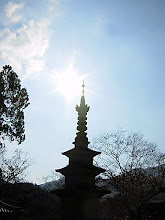I have never seen anyone state this wise puerh buying adage
so explicitly. Long time puerh drinkers,
I’m sure, all know it to be 100% true.
Don’t ever buy the same puerh production two years in a row. Why?
There are many reasons…
Even when puerh vendors are holding many things constant
such as same garden, same blend, same producers, same family gardens, same
everything… puerh is different than other tea because it will never be the same year after year. It is one of the most sensitive tea to
changes in weather and its profile is complex so there is lots of variability
year after year. Even the tightly
controlled plantation factories like Menghai Dayi factory, which have been
using the same puerh recipe for their blends forever, cannot guarantee the same
quality of production every year in even their most stable reliable blends such
as 7542, 8582, ect. The variability is
even more apparent with non-terrace or gushu puerh.
There might be a reason that a production is popular the
year that you first try a production and decide to buy it. If you have sampled widely and settle on
buying or if word of mouth takes you to the purchase, it likely was a
particularly good or optimal year for that particular puerh or production. Or maybe the vendor was impressed by the
maocha and purchased it because it was better than other year’s productions or
other gardens in the same area. If you
or the puerh vendor you trust are good at weeding these things out, then there is a higher chance that the puerh you
decide on buying is likely an example from a good growing year. This is especially true if the production is
so good it sells out fast or it is so good you are looking to buy more next
year.
One of the biggest puerh fallacies is to think- if a production is
excellent one year that it will be excellent the next. One
year will always be noticeably better and one year noticeably worst, they will
have different attributes, or, at the very least, the same attributes will be
of different quality.
Sure you may simply be buying
the next year’s production to compare to the production you already have, to
validate your idea that the year’s production that you purchased is, in fact,
the best year. If you don’t sample, then
how would you know? This is different
than buying the same production the next year assuming that it will be the same
as the year before, in fact it’s the exact opposite assumption- the next year
will be different than last year- but how so?
How different? Which qualities
will be accentuated which qualities will completely drop off? Which qualities will appear that were not in
the previous years? This is just
sampling.
The wise puerh buyer
will always aim to buy the best production year of their preferred production
if possible (potentially in volume) and not collect every inferior year of the
same production. Even for a seasoned
puerh drinker, it is sometimes difficult to avoid falling into this trap
especially when you drink through a puerh you really loved and can’t
re-order. In the end, this is just
wishful thinking, an exercise that rarely ends well.
Peace

2 comments:
I don't know Matt, it's hard to determine what the best years are or will be in aging so early on. I think 2007/2008 vintages one has to be extremely careful due to the price boom and bust. But because aging is such a the wild card, it's not bad strategy to spread your chances. Just saying, I would have been more than happy to have all 2004/2005/2006 versions of most of my beengs.
Drinking the 2006 Menghai San Ji Pu today, kicking myself for not loading up back then which at the time I was miffed I had to pay $28 for a shu.
Best,
H
hster,
Thanks for presenting an honest counter argument.
I think there are too many people that throw their hands in the air and claim that there is no way of predicting which years will age better but I disagree to some extent. Even in the mid 2000s you could kind of tell which ones would be better when comparing the same productions year after year. Most times (not always) history has proven us right. It was much harder (we were less accurate) when comparing different productions within the same factory or to different factories or areas.
We differ in that I would rather have 3 cakes of the best year of production rather than a random cake before and after that production. I would rather hedge my bets on aging by spreading my chances with what I thought was the best year of 3 completely different productions/recipes or areas/factories (a 2004x, a 2006y, and 2009z).
Your mention of 2004/2005/2006 is relevant because, well as you stated above, they are generally consider of better quality before the boom was in full swing and over picking and other factors caused the quality to decline.
I guess the question I would have for you is this-
Would you be just as happy with the 2006/2007/2008 versions of most of your bings?
Peace
Post a Comment